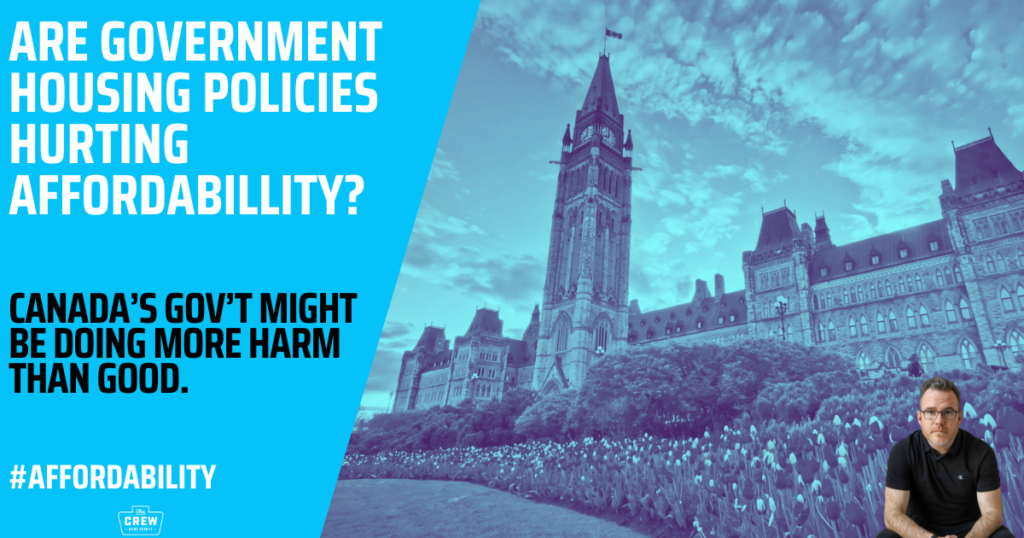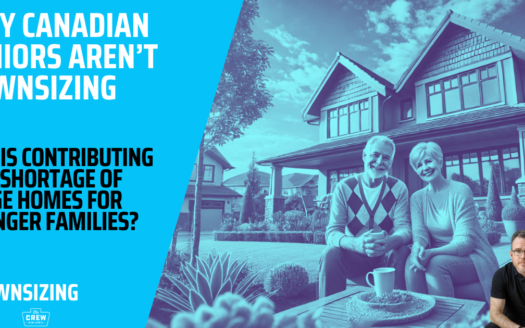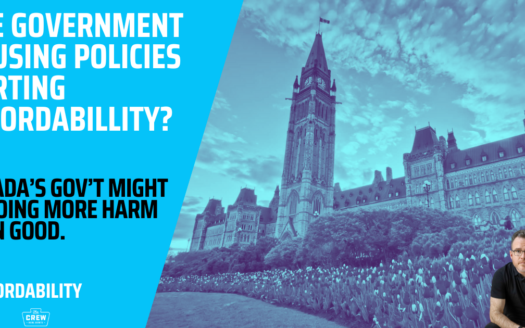Why Canadian Housing Affordability Won’t Improve Until 2035
Canadian housing affordability is a hot topic these days, and not for the right reasons. With sky-high prices, stagnant wages, and interest rates that seem allergic to going down, the dream of owning a home feels more out of reach than ever. Experts now predict that affordability levels seen before the pandemic won’t return until 2035. Let’s dig into why that is, what needs to happen, and the challenges ahead.
Matt’s Stats
- House prices: Since 2022, national house prices have dropped by 20%. However, experts suggest that an additional 30% decline is necessary to restore pre-pandemic affordability.
- New homes required: Canada needs to build 4.2 million new homes between 2024 and 2035 to balance supply and demand.
- Incomes: Household incomes would need to increase by 50% to bridge the affordability gap. However, wage growth has plateaued at 5% since its peak.
- Vacancy rates: To balance the market, the national vacancy rate must climb back to 9% from its current level of 5.7%.
The Three Pillars of Housing Affordability
When it comes to housing affordability, three key factors play a decisive role: house prices, mortgage interest rates, and household income. Together, these pillars create the foundation for whether a home is within reach for most Canadians. Let’s break each one down:
House Prices: The Most Visible Factor
House prices are the cornerstone of affordability—they’re the first thing buyers consider when evaluating whether they can afford a home. Over the past decade, Canadian home prices have skyrocketed, with some regions like Toronto and Vancouver becoming almost prohibitively expensive for middle-income earners.
Recent price corrections, including a 20% drop nationally since 2022, have provided a bit of relief. However, experts suggest that prices would need to drop another 30% to bring affordability back to pre-pandemic levels. The problem? Such a drastic decrease is unlikely without severe economic repercussions, like a major housing market crash.
Mortgage Interest Rates: The Hidden Cost of Borrowing
While house prices get the most attention, mortgage interest rates are the silent game-changer in housing affordability. Even a small change in interest rates can have a huge impact on monthly payments. For example, a 1% increase in rates could add hundreds of dollars to a typical mortgage payment.
While home prices have fallen significantly since their 2022 peak, the market is beginning to shift from a “sideways” phase due to the Bank of Canada’s aggressive rate cuts in 2024. These reductions in borrowing costs have injected some momentum into the market, though affordability challenges persist as wage growth slows and housing supply remains constrained.
Additionally, earlier projections suggested that a 350-basis-point cut was necessary to make significant progress toward affordability. With the Bank of Canada having already implemented cuts amounting to 125 basis-points since June 2024, the market is seeing more activity, but the gap in affordability is far from closed.
Household Income: The Power to Bridge the Gap for Canadian Housing Affordability
The third pillar, household income, determines how much buyers can afford to spend on housing. Over the past few years, wage growth has lagged far behind the surge in home prices. Incomes would need to rise by a staggering 50% to restore housing affordability to pre-pandemic levels.
Unfortunately, wage growth in Canada has slowed to around 5% in recent years, and rising unemployment (currently at 6.8%) adds further pressure. Young Canadians are hit particularly hard, with many delaying homeownership due to financial constraints and job insecurity.
Why Balancing These Pillars Is So Hard
For housing affordability to improve, at least one of these factors needs to shift significantly. Ideally, all three would move in the right direction—lower house prices, reduced mortgage rates, and rising incomes. But in reality, these pillars often work against each other. For example, when interest rates drop, house prices often rise due to increased demand.
The challenge is creating a sustainable balance where home prices and mortgage rates align with what households can realistically afford. Until then, housing affordability will remain a significant issue for Canadians.
While home prices have fallen significantly since their 2022 peak, the market has entered a “sideways” phase—prices aren’t dropping further, but they’re not rising either. Meanwhile, wage growth is slowing, and anticipated interest rate cuts are expected to be modest, leaving affordability improvements dependent on a multifaceted approach.
How Many Homes Do We Actually Need?
A recent Oxford Economics report provides a comprehensive breakdown of Canada’s housing needs. By 2035, Canada must construct 4.2 million new homes to restore market balance. This figure includes:
- 2.9 million units to meet household growth and replace demolitions.
- 700,000 units to restore a long-term equilibrium vacancy rate of 9%.
- 600,000 units to make up for suppressed household formation caused by unaffordable housing.
The challenge? Building at such an ambitious pace requires overcoming significant hurdles, including labour shortages, rising construction costs, and resource constraints.
Government Policies: Help or Hurdle to Canadian Housing Affordability?

Recent policies, such as extending amortization periods for insured mortgages and raising the CMHC cutoff to $1.5 million, aim to stimulate demand. However, critics argue these measures may inadvertently drive prices higher, further eroding affordability.
Additionally, while the government’s aspirational target to build 3.5 million homes by 2030 is a bold step, Oxford Economics questions its feasibility, citing capacity constraints in the construction sector. Overbuilding could even lead to oversupply, with unoccupied homes contributing to a price slump in the mid-2030s.
Why Income Growth Isn’t Saving the Day
The employment landscape offers little solace. Unemployment sits at 6.8%, with job growth predominantly in the public sector. Private-sector job creation remains sluggish, and younger Canadians—already burdened by stagnant wages—are disproportionately affected by layoffs.
Adding to the concern, 25% of Canadians cannot afford their mortgage for more than three months if they lose their job, underscoring the precariousness of household finances.
So, What’s the Path Forward for Housing Affordability?
From rethinking how we measure affordability to exploring sustainable housing solutions like purpose-built rentals, there’s no shortage of ideas. However, addressing the housing crisis will require political will, cross-sector collaboration, and a long-term vision.
What do you think? Share your insights in the comments, or drop me a message. Let’s brainstorm solutions for a more affordable future.


